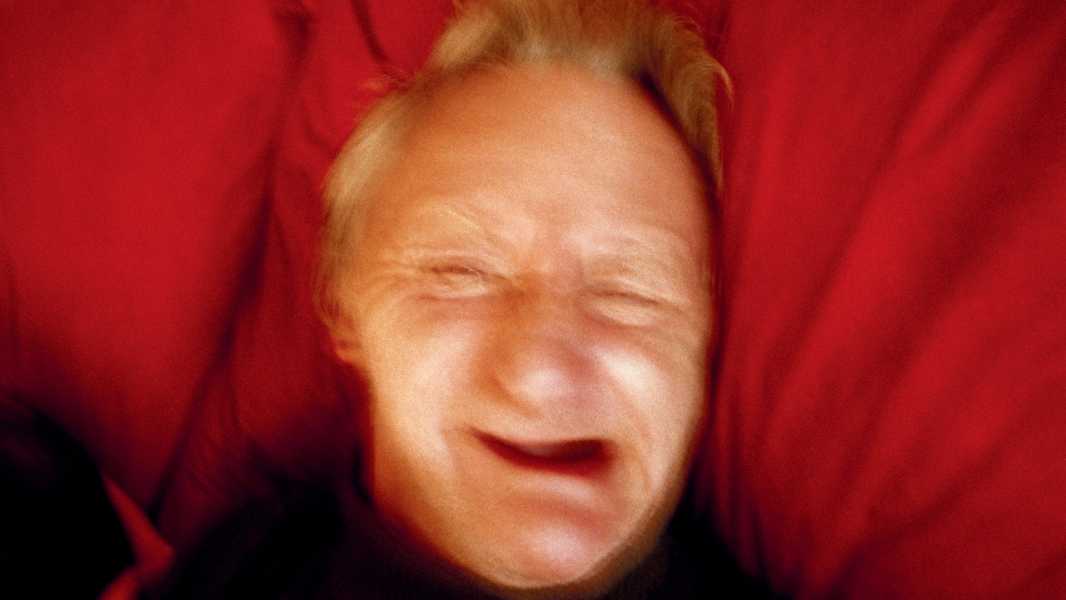
Save this storySave this storySave this storySave this story
In 1997, the British photographer Richard Billingham published “Ray’s a Laugh,” a landmark book that launched him from a shelf-stacking job at a Birmingham Kwik Save to the art-world stratosphere. The pictures within chronicle a turbulent half decade in the lives of Billingham’s family members, who reside in a tumbledown tower-block apartment in the town of Cradley Heath. The titular figure is Billingham’s rangy, alcoholic father, who turned to drink after being made redundant from his job as a machinist. At the book’s start, Ray drinks alone, locked away in his room after his wife, Liz, walks out on him. Later, reunited with Liz, he bears a toothless grin, chucks a cat across the living room, smokes cigarettes, tumbles forward onto the floor. (“Ray’s a Laugh” shares its title with a long-running BBC radio program, which Ray’s first wife, Dorothy, would often reference, presumably ironically, when talking about her ex.) Billingham’s unvarnished portrait earned him accusations of sensationalism, and some critics grumbled about his perceived naïveté; his pictures were a mere fluke, they suggested, the lucky result of the unlucky circumstances of his birth. But the grit and immediacy of the images were difficult to deny. A year after the book’s release, a selection of his work was included in the epochal “Sensation” exhibition, at the Royal Academy of Arts, and won him a Citibank Photography Prize.


Now considered a classic, “Ray’s a Laugh” has been newly reissued, in an expanded form, by Mack, and from today’s vantage it looks just as bracing and uncompromising as it did when it was originally released—and perhaps even more relevant in the post-Brexit era of increasingly intractable inequality. Billingham, the first in his family to go to college, began taking photographs of his father as studies for paintings during art school. As a student at the University of Sunderland, he switched his focus from painting to photography after one of his professors, Julian Germain, began to champion his pictures and passed them along to Michael Collins, then the pictures editor at the Sunday Telegraph Magazine. The images were starkly lit, often with direct flash, which made them rather pitiless. They exposed every blemish and crag on the faces of the Billinghams, every stain and scuff that marked the surfaces of their lives. Booze, often in the form of cheap, home-brewed beer in repurposed plastic bottles, was ever present, so much so that the pictures themselves seemed besotted, like you could smell stale alcohol if you held them close enough to your nose.
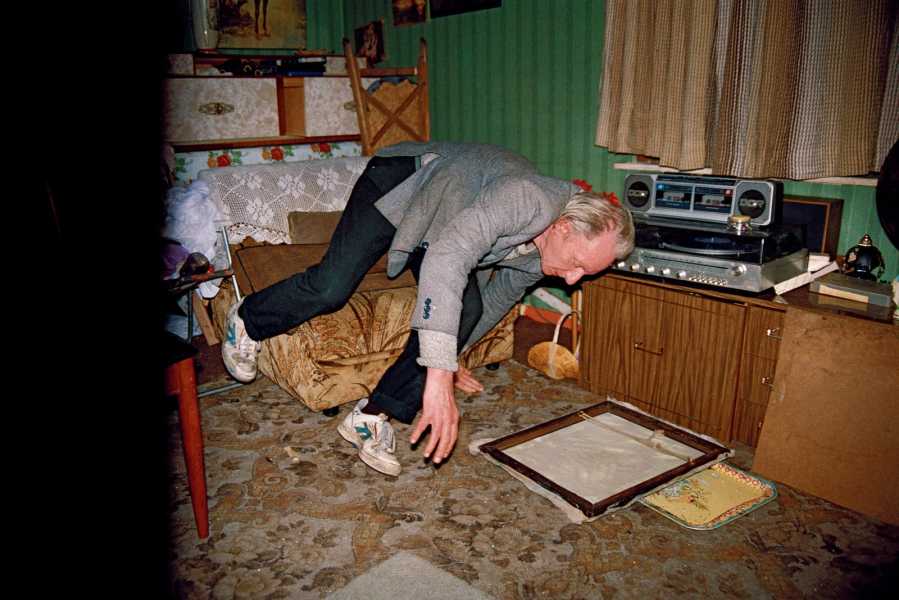

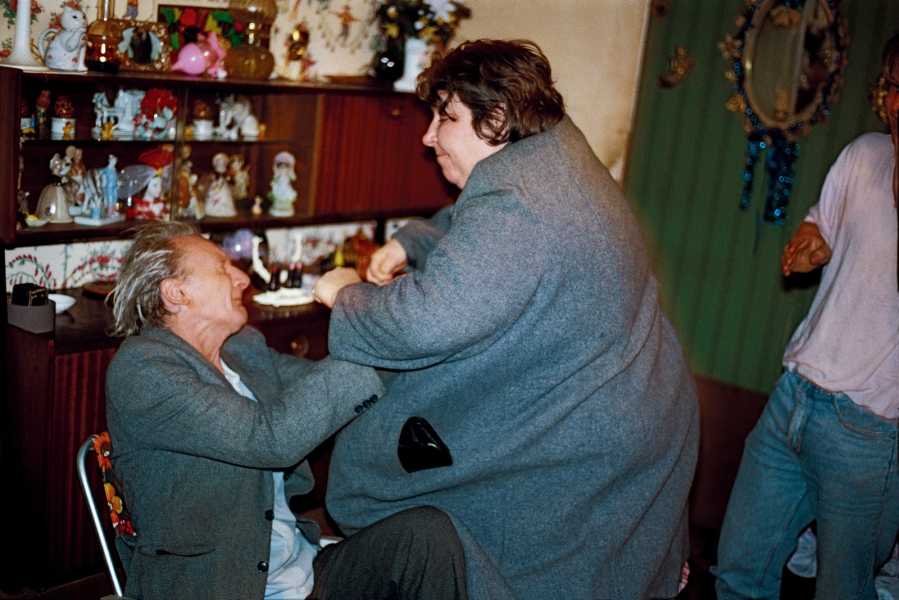
Liz, the tattooed family matriarch, lords over the proceedings in bright, floral housedresses, sometimes with an air of menace. Her domestic passions for jigsaw puzzles, flower arranging, and caring for a menagerie of pets belied a violent streak, which she reserved exclusively for her husband. But in Billingham’s photos she is just as often exhibiting tenderness, syringe-feeding a tiny kitten or serving an appreciative Ray a pair of boiled eggs. Rounding out the group is Billingham’s younger brother, Jason, who was taken into foster care at around age ten but returned to the household as a teen-ager. (The incident that led to him to be removed from the family, involving a night spent alone in a freezing garden shed, is dramatized poignantly in Billingham’s début feature film, “Ray & Liz,” from 2018, which he based on his childhood memories.) The images of Jason thrum with rudderless teen-age bravado. He holds a big bowie knife at his crotch, his hips thrust forward in hormonal pride, or clutches his baby daughter in his lap with a stunned look on his face.
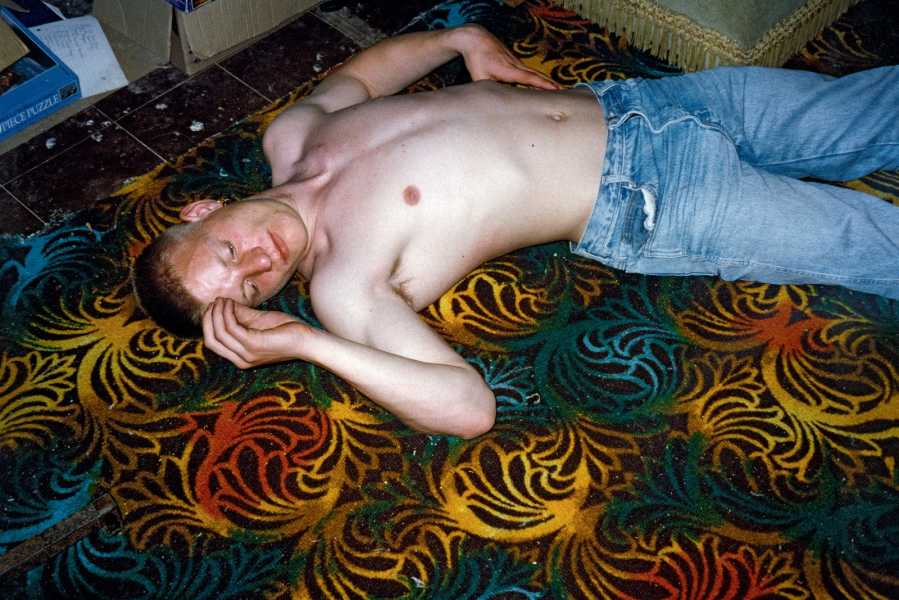
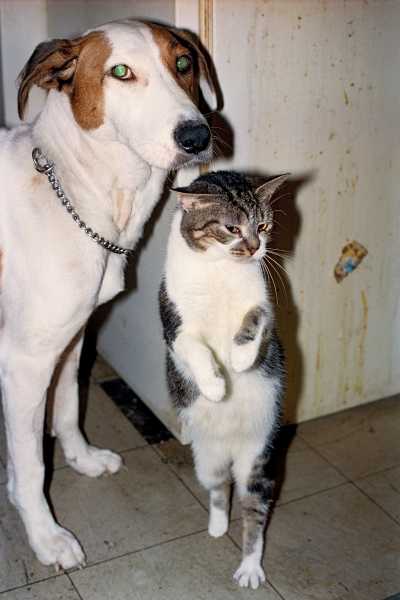
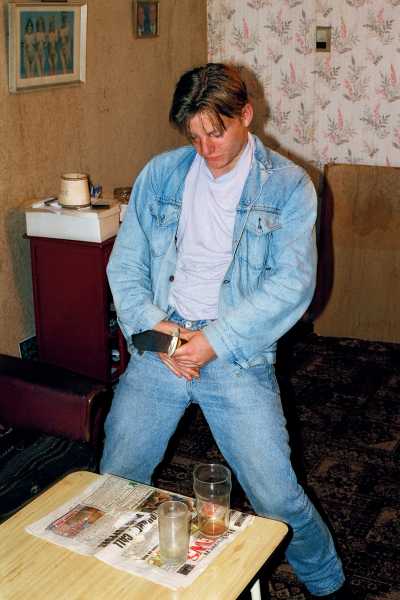
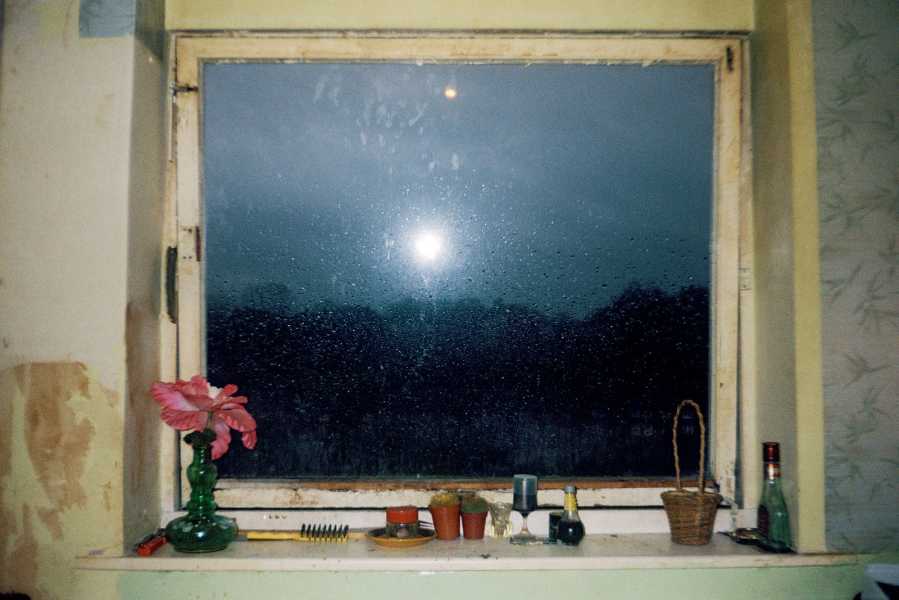
Billingham is now fifty-three years old. In the decades since “Ray’s a Laugh,” he has produced other significant bodies of photographic work in totally different registers, including gorgeous large-scale landscapes that betray his love of John Constable and touching pictures of zoo animals, trapped in their simulated environs. When I reached him recently—via video chat at his home, in Swansea, which he shares with his wife and three children—he told me, “I’m a realist,” adding, “I don’t want to make work that’s about sympathy. Empathy, yes. Maybe people think it’s shocking.” Almost certainly, some of the fracas attending “Ray’s a Laugh” was provoked by the fact that his work was initially shown in a splashy contemporary-art context, alongside British provocateurs such as Tracey Emin and Damien Hirst. Had his images instead been slotted into a lineage of photojournalistic documentation of the British working class, like the work of, say, Chris Killip, the story might have been different. After all, the pictures share little in common with the voyeuristic grotesqueries of someone like Martin Parr, or even the superficially similar work of Nick Waplington, who has documented life in the council estates of the West Midlands, where his father grew up, but who himself grew up in a comfortably middle-class household. No one can question that this is Billingham’s tale to tell.
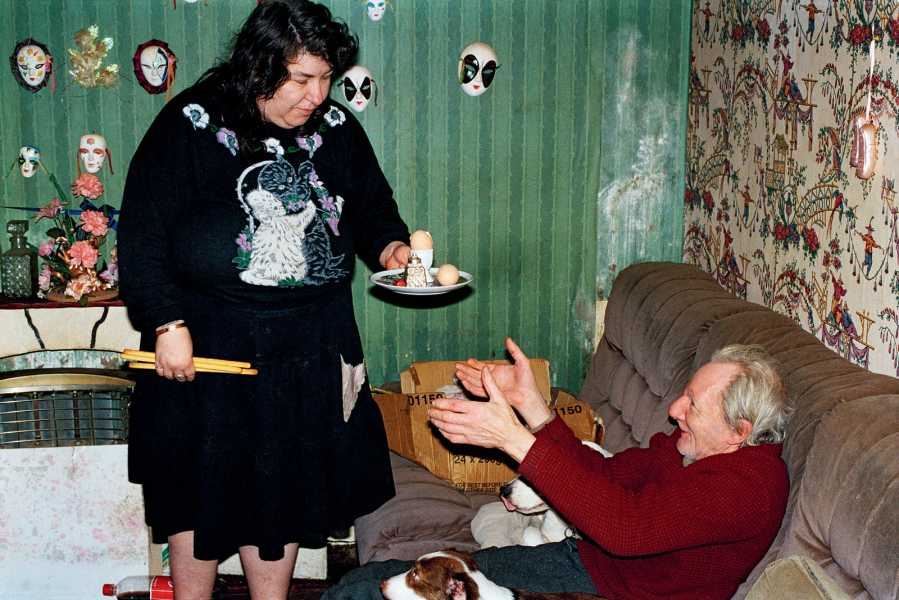
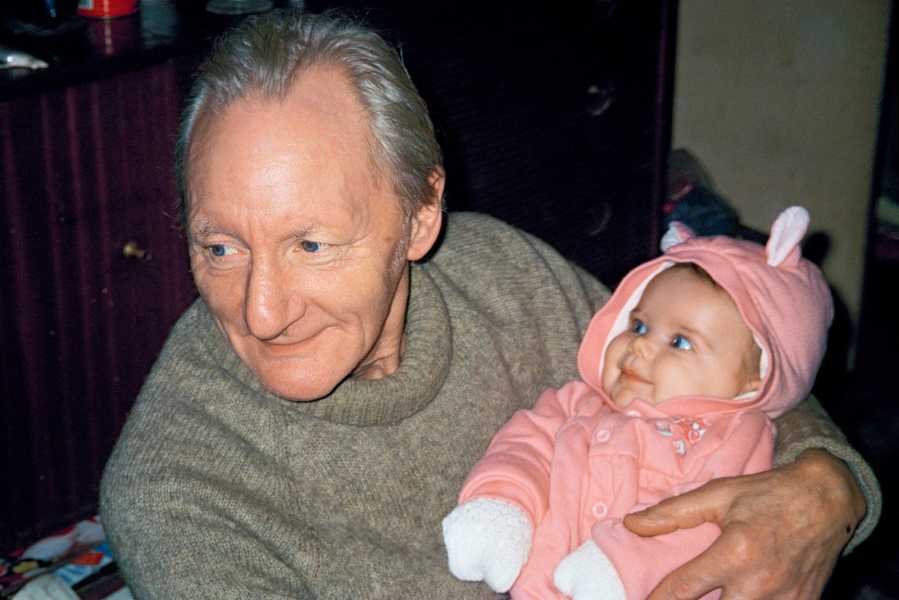
Talking to Billingham, though, I was struck by how much he spoke about the pictures in “Ray’s a Laugh” in purely formal terms. “When a photographer makes a picture, they’re looking through the frame and they’re trying to get everything to balance,” he told me. “I’m not even looking at facial expressions and things that much. So the narrative context—maybe that’s subconscious?” He said that taking photos had helped him to step back from the fray of family life. “I couldn’t articulate it at the time, but I realized that I could sort of see where I lived from the outside,” he recalled. “You know, if you do an etching, and after a few hours you’ve been really involved in the etching, and then you ink it up, and you put the paper on, and you peel the page back, you suddenly see it like a mirror image. You see it like another person for a moment. You’ve been really stuck in it. And then you think, Oh, that’s what it really looks like.”
Perhaps most surprising, in our era of the grievance narrative and the trauma plot, is Billingham’s insistence that he bears his parents no ill will. Describing his early childhood, before his parents lost their house and moved him and his brother to the tower-block apartment in which he shot “Ray’s a Laugh,” he said that he has mostly “happy memories,” despite scenes in “Ray & Liz” that would suggest otherwise. “I probably did go through a phase where I was angry, like all teen-agers do,” he told me. “But by the time I was taking the pictures I think I’d been through that.” Ray and Liz are no longer alive, but, according to Billingham, they never had hard feelings about the photos, either. He recalled being nervous, in 1998, when the BBC débuted a video work he made titled “Fishtank,” showing his family at home, drinking, fighting, and aimlessly living their lives. “I was a bit afraid that everyone sees that on the telly, and the neighbors are going to see it, and the next day, maybe if they go out, people are gonna make fun of them,” he said, of his parents. “And they did go out the next day—they went down to the market. Well, people had seen it, but they said things, like, ‘I saw you on the TV last night. You’re famous.’ ”

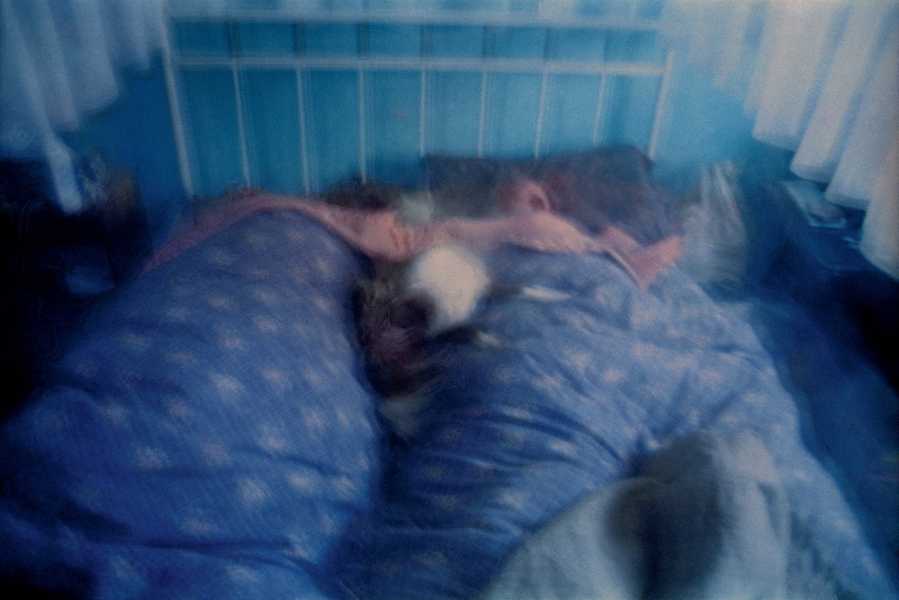

Sourse: newyorker.com